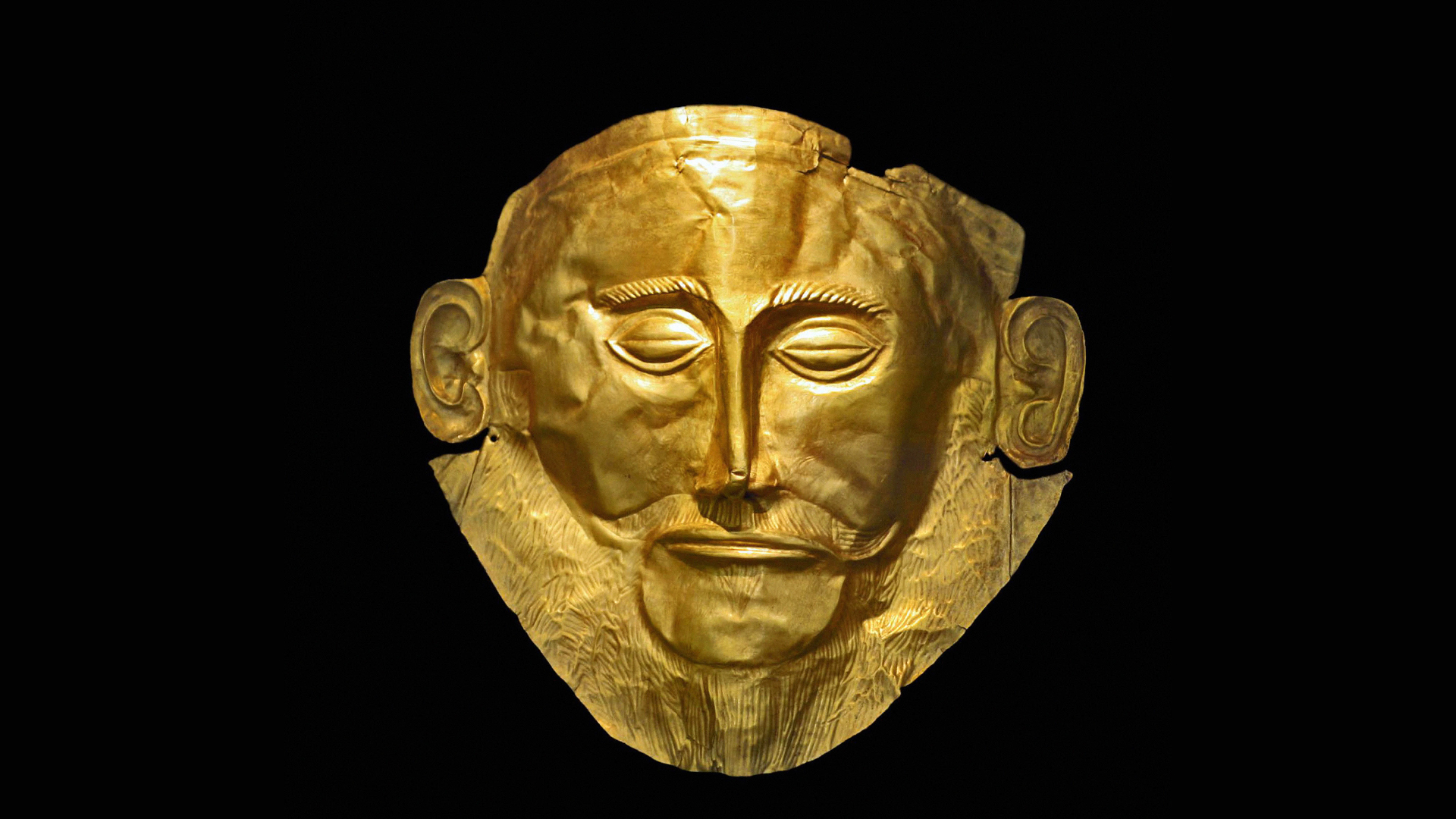
Name: Mask of Agamemnon
What it is: A gold funerary mask of a man's face
Where it is from: Mycenae, an archaeological site in southern Greece
When it was made: Circa 1500 B.C.
Related: Phaistos Disk: 3,000-year-old inscriptions from Crete that have never been deciphered
What it tells us about the past:
This gold death mask was found by German archaeologist Heinrich Schliemann in 1876 during excavations of a Bronze Age tomb at the Mycenae archaeological site in southern Greece.
Schliemann believed he had found the body of the mythical king Agamemnon, who led the Achaean (Greek) siege of Troy in Homer's "Iliad” (he is also mentioned in Homer's "Odyssey" and features in some ancient Greek plays.) According to Homer, Agamemnon ruled at Mycenae, and the artifact has been known as the "Mask of Agamemnon" ever since.
But the artistic style of the artifact and subsequent studies of the archaeological site on the Peloponnese Peninsula suggest the mask was made in about 1500 B.C. — hundreds of years before Agamemnon might have lived — and some suggest it was made even earlier.
The mask is formed from a thin sheet of gold and would have been made in the living likeness of the deceased. The royal tomb where it was found contained the remains of eight people. All of them had weapons, but only five wore gold death masks, which archaeologists think indicated status.
The Mycenaeans were a Bronze Age people who lived throughout southern Greece after about 1750 B.C. They spoke an early form of Greek, and their civilization was greatly influenced by the Minoan civilization of Crete.
Schliemann thought the Mycenaeans were the Achaeans of the "Iliad" and believed their remains showed the historical reality of the Trojan War. Although some Mycenaean sites correspond to Achaean kingdoms in the "Iliad," archaeologists now think the Mycenaean civilization ended in about 1200 B.C., during the "Late Bronze Age collapse," while the Trojan War may have happened hundreds of years later.







